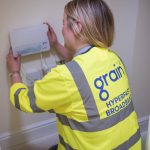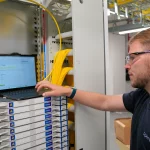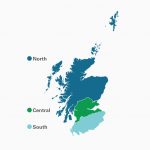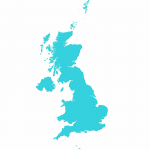Farewell to BT’s Unloved 2Mbps Rural Broadband Enabling Technology
Openreach (BT) has informed ISPs of their intention to stop deploying Broadband Enabling Technology (BET) to additional exchanges. The service could be used to extend the reach of a 1-2Mbps DSL line up to around 10km from a local telephone exchange, provided you had very deep pockets.
The BET solution (aka – SHDSL) was originally revived in 2009/10 as a possible method for meeting the government’s 2Mbps for all Universal Service Commitment (USC), which was useful because normal pure copper ADSL broadband services would typically run into performance difficulties when asked to work on lines over around 5-6.5km in length.
Advertisement
In practice there were problems with BET and it was only deployed at a limited number of telephone exchanges, such as in several parts of remote rural Scotland and a few other similarly isolated areas around England and Wales. The biggest issue was one of cost, with the basic connection fee on an existing SMPF (LLU) line reaching £600 +vat and that was only for the 1Mbps option.
Similarly the 2Mbps option could attract a connection fee of £900 +vat and that’s before you consider that it was a bonded solution, requiring two lines and a rental fee on top. Suffice to say that the majority of ISPs showed no interest and very few people actually ended up using it.
More recently Openreach has been busy expanding the reach of their 21st Century Network and FTTC/P based “fibre broadband” services, which are expected to cover the vast majority of the United Kingdom by 2019 (around 97% will be able to receive “superfast” speeds of 24-30Mbps+). On top of that alternative networks are working to fill in the gaps, which makes BET largely obsolete.
A Spokesperson for Openreach told ISPreview.co.uk:
“Openreach can confirm that, from the end of October, it will no longer be making its Broadband Enabling Technology (BET) product available from any additional exchanges. Existing customers supported by BET will not be affected.
This legacy product was originally designed to provide a better service to those customers served by long lines who experienced very slow speeds or no broadband service at all.
There has been little demand for the product in recent years as it has long since been superseded by Openreach’s roll-out of high-speed fibre broadband. This has helped to bring superfast speeds to more than nine out of ten UK premises.
Our fibre roll-out continues while we’re also supporting the Government’s ambition to deliver a 10Mbps broadband USO to the final few per cent of premises that don’t have access to fibre today. We stand ready to help and have identified a technology which could provide a solution, under the right circumstances.”
A migration path to FTTC does exist for BET customers and so we wouldn’t be surprised to see plenty of upgrades as Openreach extend further into remote areas, which may eventually result in BET being completely withdrawn.
Advertisement
Mark is a professional technology writer, IT consultant and computer engineer from Dorset (England), he also founded ISPreview in 1999 and enjoys analysing the latest telecoms and broadband developments. Find me on X (Twitter), Mastodon, Facebook, BlueSky, Threads.net and Linkedin.
« KCOM Boast £187m Boost to the Economy in Hull and East Yorkshire

















































Comments are closed